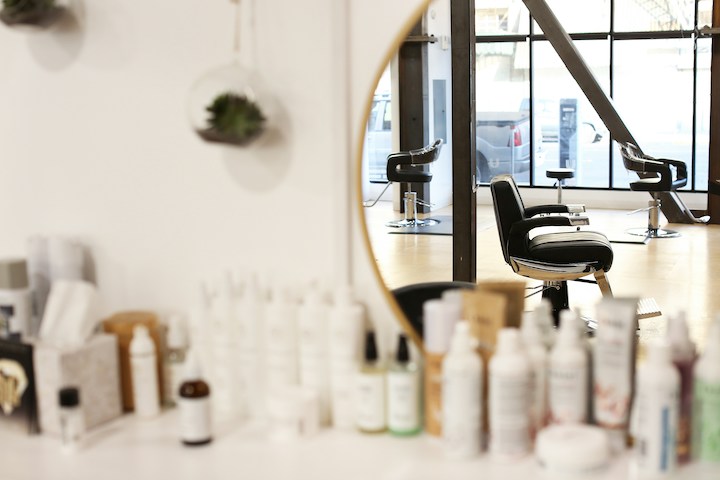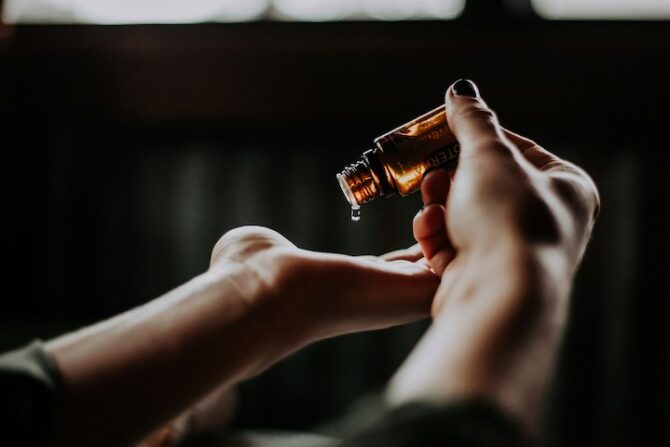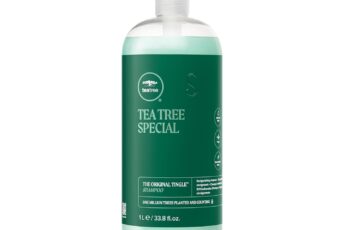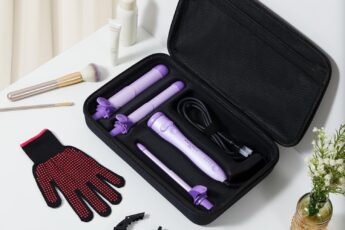Have you ever looked at the back of a hair styling product and felt like you were reading a different language? You’re not alone. Most labels are packed with ingredients you’ve never heard of. And yet, you still use the product, hoping it’ll do what it claims—hold, smooth, lift, or define.
But there’s a lot more going on than what the front of the bottle tells you. The way these products are formulated matters. Not just for how they make your hair look, but also for how your hair feels afterward.
So, if you’ve ever wondered what’s really inside that styling gel or cream you’re using, this is where it starts to make sense. We’re going to walk through the basics of hair styling product formulation—clearly, directly, and without the fluff. You don’t need a chemistry degree. You just need someone to break it down properly.
Table of Contents
What Is Hair Styling Product Formulation, Really?
Formulation just means how a product is put together. It’s the combination of ingredients, their roles, and how they work together to deliver the final result.
When you apply something like a mousse or pomade, you’re not just getting hold or shine. You’re applying a mix of compounds that have specific purposes—some for texture, others for preservation, others for appearance or scent.
It’s similar to a recipe. Each ingredient contributes something. Some thicken, some moisturize, some help the product stick to your hair. And if one part of the formula is off, the product either won’t work as well or it might cause unwanted effects like dryness or buildup.

Main Categories of Hair Styling Products
To understand how different ingredients work, it helps to know the categories of styling products first. Each type is made for a different goal:
- Hair Gel – Offers strong hold. Often used to shape or slick back hair. Can be drying if used in excess.
- Mousse – Light and airy. Adds volume and helps define waves or curls without weighing the hair down.
- Wax – Thick and pliable. Used to create texture, especially in short styles.
- Pomade – Softer than wax, gives shine and a smoother finish. Popular for sleek, controlled styles.
- Styling Cream or Serum – Focuses on frizz control and softness. These are not meant for hold, just manageability.
- Hair Spray – Used to set the style after it’s complete. Varies from light to strong hold.
Once you know what each product is supposed to do, it becomes easier to figure out why certain ingredients are used in one product but not another.
Check Out: How to Fix Hair Dye Disasters at Home
Core Ingredients Used in Styling Products
Most styling products are built from a handful of key ingredient types. Here’s what they are and why they’re used:
- Water or Alcohol Base
This is what gives the product its texture. Water-based products are easier to apply and wash out. Alcohol-based products dry faster but can strip moisture if overused. - Polymers
These create hold. They coat the hair and help it keep shape. Common names include PVP, VP/VA copolymers, and acrylates. They form a thin film over your hair strands. - Oils and Butters
Ingredients like shea butter, argan oil, or coconut oil are added for softness, shine, and frizz control. They also prevent dryness. - Silicones
These create slip, shine, and protection. Not all silicones are the same—some are water-soluble and wash out easily, while others can build up and cause issues over time. - Fragrances and Preservatives
Fragrances make products smell pleasant, but they can irritate sensitive skin. Preservatives (like parabens or phenoxyethanol) are used to prevent mold and bacteria, especially in products that contain water.
This mix of ingredients is what gives each product its specific feel, finish, and function. Not every ingredient is good for every hair type, and some combinations work better than others depending on what your hair needs.
The Role of pH in Hair Styling Formulas
Your scalp and hair naturally sit in the slightly acidic range, around pH 4.5 to 5.5. If a product’s pH is too high or too low, it can disrupt that balance.
Products with high pH can raise the hair cuticle, which makes your strands feel rough and dry. They can also irritate the scalp. On the other hand, products formulated within a healthy pH range help keep the hair cuticle flat, which results in smoother, shinier hair.
Most manufacturers design products to stay within the safe pH zone. But if your hair starts acting differently—becoming frizzy, brittle, or unusually dry—it could be a sign the product’s pH doesn’t agree with you.
Common Additives You Might Not Realize Are in There
Besides the core ingredients, many styling products contain extras that change how the formula behaves:
- Thickening Agents – These make the product feel richer or give it a creamy texture. Often seen in pomades or creams.
- Anti-Humectants – These block moisture from the air. Useful in humid climates to reduce frizz.
- Colorants – These are only added for appearance. They don’t affect the hair.
- Texture Enhancers – These give products a more spreadable feel or help them absorb faster.
These additions don’t usually stand out unless you’re sensitive to certain chemicals. But if a product is causing buildup or leaving residue, one of these could be the cause.
Natural vs Synthetic: What’s Actually Better?
There’s a lot of confusion around this. Natural ingredients sound safer. Synthetic ingredients sound engineered and less trustworthy. But it’s not that simple.
Some natural ingredients are effective and gentle. Others can cause buildup, greasiness, or even allergic reactions. The same goes for synthetic ones.
For example, dimethicone (a silicone) is synthetic, but it creates a smooth barrier that protects hair from heat and humidity. It’s helpful in the right amount. On the flip side, natural oils like coconut oil can be great for thick, coarse hair but too heavy for fine hair.
It’s not about choosing one side. It’s about understanding what works best for your hair. That might mean using a mix of both types.

How Brands Adjust Formulas for Different Hair Types
Hair types aren’t all the same, and good brands take this into account. You’ll notice that products designed for fine hair feel lighter and absorb quickly. Those meant for curly or coily hair are richer and more concentrated.
Here’s what that usually looks like:
- Fine or Thin Hair – Needs lightweight formulas. Products will avoid heavy oils or waxes. Hold is usually lighter and more flexible.
- Curly Hair – Needs moisture and definition. You’ll see ingredients like glycerin, aloe, and shea butter, along with film-formers to help curls hold shape.
- Coily Hair – Needs both moisture and structure. Products are often the richest in texture and include oils, butters, and stronger holding agents.
So if something works for someone else but not for you, it’s likely the formula wasn’t built for your hair’s needs.
Also Read: Hair Oil Application Techniques That Actually Make a Difference
Can You Make Your Own?
Yes, but with limitations. Homemade products are fine for basic moisture or light hold. But when it comes to replicating the hold, finish, or consistency of store-bought products, it’s not easy to match.
Here’s a basic DIY example:
- Flaxseed Gel
- 2 tablespoons flaxseeds
- 1 cup water
- Boil, strain, and cool
- Store in the fridge for up to a week
It gives a light hold and is gentle on curls. But keep in mind—it doesn’t contain preservatives or advanced polymers. So while it’s great in the short term, it won’t replace a commercial gel if you need long-lasting control.
Conclusion
Hair styling products aren’t as mysterious as they seem once you understand the basics of formulation. Every ingredient is added for a reason—whether it’s for hold, shine, smoothness, or protection.
The goal isn’t to memorize every name on the label. It’s to build awareness. Once you can identify a few key components and understand what your hair type needs, you’re in a better position to choose products that actually work for you.
Hair care is personal. There’s no one-size-fits-all formula. But the more you understand the process behind these products, the more control you’ll have over what goes into your routine.
Frequently Asked Questions
Why does my hair feel crunchy after using gel?
It’s usually due to a high concentration of polymers that harden as they dry. Try applying less product or breaking the cast by scrunching once your hair is dry.
Can I use styling cream every day?
Yes, especially if it’s lightweight and doesn’t cause buildup. Always pay attention to how your hair feels after consistent use.
Are alcohol-based products always bad for your hair?
Not necessarily. Short-chain alcohols like ethanol can be drying, but fatty alcohols like cetyl or stearyl alcohol are moisturizing. It depends on the type.
What’s the best styling product for natural curls?
Look for creams or gels made for curly textures. Moisture-retaining ingredients combined with a flexible hold usually give the best results.



